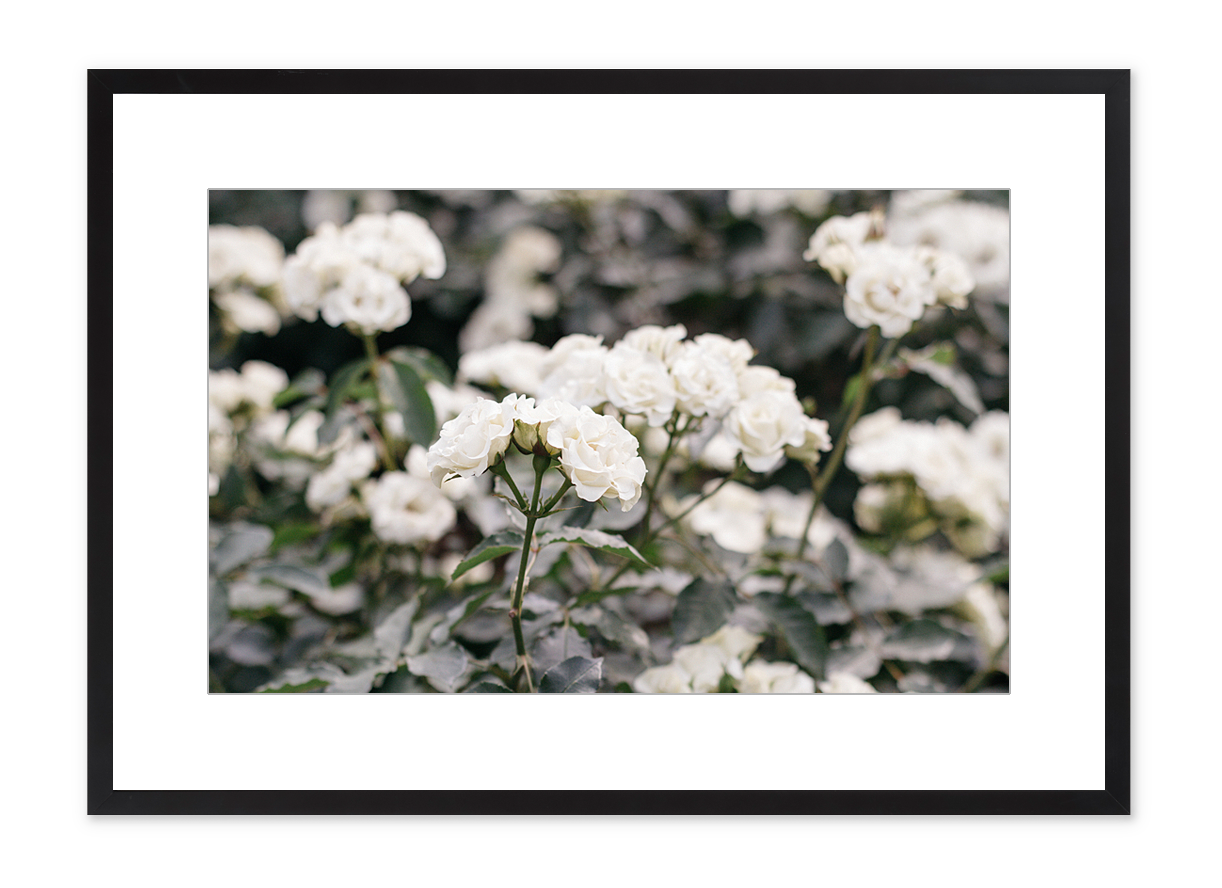
07/15/2023
by Laura Gardiner
Studio Manager, Tribeca Printworks
Matting is a border surrounding a print or art piece inside a picture frame. The frame mat you choose is an important decision. It affects the visual presentation of your print, so it’s essential to choose wisely. Consider the different elements of the mat. The color, texture, acidity level and conservation quality will all impact your artwork.
The main benefit of matting is its visual enhancement to artwork. To enrich your print’s aesthetic, you can also add color and layers to your matting. Before you choose a picture frame mat, here are a few things you should consider.
Why Matting Is Important
A picture frame mat has aesthetic and practical advantages for your artwork or photograph. It adds aesthetic balance and proportion to the viewing experience of your print. The visual distance it creates between the artwork’s edges and the frame’s inside edges helps you balance out your piece. A frame mat creates a visual buffer between the frame and the artwork to keep the two from competing for viewers’ attention.
The color of the matting also magnifies and enhances the print it surrounds. You can choose a traditional white picture frame mat or color matting that highlights colors in your artwork. The matting must create an overall cohesive finish instead of being a distraction.
Choosing a Mat for Your Frame
Picture frame matting comes in different materials and textures. There are three main types of mat boards of varying qualities to suit different artwork requirements. Before matting a picture frame, it’s essential to take a look at the specific properties of each.
Paper Mat Board
Paper mat board is the most affordable option, but it does little to preserve your artwork. It is a basic mat board made from wood pulp treated with calcium carbonate to create a temporary alkaline pH level. This treatment creates a temporary buffer. Over time the effects deteriorate, causing the mat board to become acidic, which damages the artwork. These matboards are only suitable for temporary use. Avoid using them for valuable pieces and custom framing.
At Tribeca Printworks, we only use archival acid-free alpha cellulose mat board and rag mat board in our framing to preserve the beauty and longevity of your artwork.
Alpha Cellulose Mat Board
Some museums use the Alpha Cellulose Mat board as a more affordable alternative to rag matting. The wood pulp used to make this mat board is free from lignin and other harmful substances. This purity makes it a good, affordable option for archival framing. There are also more color options available with this matting. Our alpha cellulose mat board is available in 4-ply and 8-ply thickness.
Rag Matting
The finest quality mat board you can choose is 100% cotton. The quality of this matting makes it the top choice of museums and other institutions. It offers exceptional depth for framing, and its durability and strength stand the test of time. This matting is ideal for valuable pieces. It is conservation quality and the best matting you can choose to ensure the longevity of your piece.
It’s essential to be aware that some rag mat boards on the market have cotton at the center, but their surface and backing are wood pulp, so they fall short of museum-grade standards.
Our acid-free archival rag matting is available in 4-ply and 8-ply. The most noticeable difference is the thickness. A 4-ply is about 0.04 to 0.07 inches thick, and an 8-ply lies between 0.08 to 0.14 inches.
Poor-quality mat boards deteriorate over time. They become more acidic, start to brown and can damage your artwork. High-quality matting is acid-free, so it lasts much longer and keeps your print protected over time. Light also affects the color of your mat board. The finest mat boards are more resistant to fading and maintain their color longer than the more affordable options.
Other Considerations for Choosing Matting
Now that you’re familiar with the types of matting, explore some additional considerations for choosing the ideal matting for your piece:
Double vs. Single Mat Board
Once you decide to add matting, you can add a single mat or a double mat. Single matting is one layer of mat board. It helps to draw the eyes to the piece and give it a finished look.
Double matting adds depth to your print. It has two matting layers, with the top layer cut to reveal the inner edge of the bottom layer. The two layers can be the same color to create a tiered look. A popular choice for custom framing is a white-on-white double layer that gives an elegant finish.
You can also choose two different colors for your layers. For example, the exposed bottom layer can be a darker tone with a lighter color on top. You can use this effect to make an element of your print stand out.
Color vs. White Mat Board
The color of your matting should complement your print without overpowering it.
White or off-white matting is subtle yet adds depth without competing with your print. A white mat board is an excellent choice for a crisp look. White allows the artwork speaks for itself without competing with another color. It makes it easier for the eyes to focus on the print. White is also a versatile color that matches various interior design styles and spaces.
If you still want a classic look that is less stark, off-white can help you achieve this. In some cases, off-white complements muted tones better than a white matt board.
Some prints pair well with color picture mat frames. Before choosing a color, consider the hues in your piece. Darker, heavier tones suit specific art styles and can add a bold contemporary finish to traditional artwork. If you use a single mat board, match the matting to the dominant color of the print.
For double matting, avoid choosing a color that matches the predominant color in your print. You want to draw out the undertones of your piece to create balance. You can achieve this balance by choosing a color that matches your print’s third or fourth predominant color. While bold colors can be fun, remember that the matting should enhance your artwork instead of competing with it. More contending colors may distract from the artwork.
Mat Board Sizing and Layout
The size of your matting will affect the presentation of your print. It’s best for your matting to be at least 1 inch wider than your moulding. Most mat boards are between 2-4 inches wide. Large prints often pair well with wider matting, and small prints look better with a narrower look.
If you want to make a bold statement on a small piece of art, you can choose an oversized mat. This pairing creates a classic art gallery look and stands out well on a more oversized wall. For a sophisticated finish, you can also design your matting to be taller at the bottom than at the top.
Choose Tribeca Printworks for Custom Framing
Matting is the perfect way to elevate your print. At Tribeca Printworks, our picture frame mats are acid-free rag matting to ensure the longevity of your print. We have various sizes to choose from that are available in all our frames. Add an elegant finishing touch to your print with a handmade custom frame. All of our materials are conservation-quality and archival grade to preserve your print. You can view all of our custom frame options on our website.
If you need advice on which matting and frame to choose for your print, get in touch with us today!

